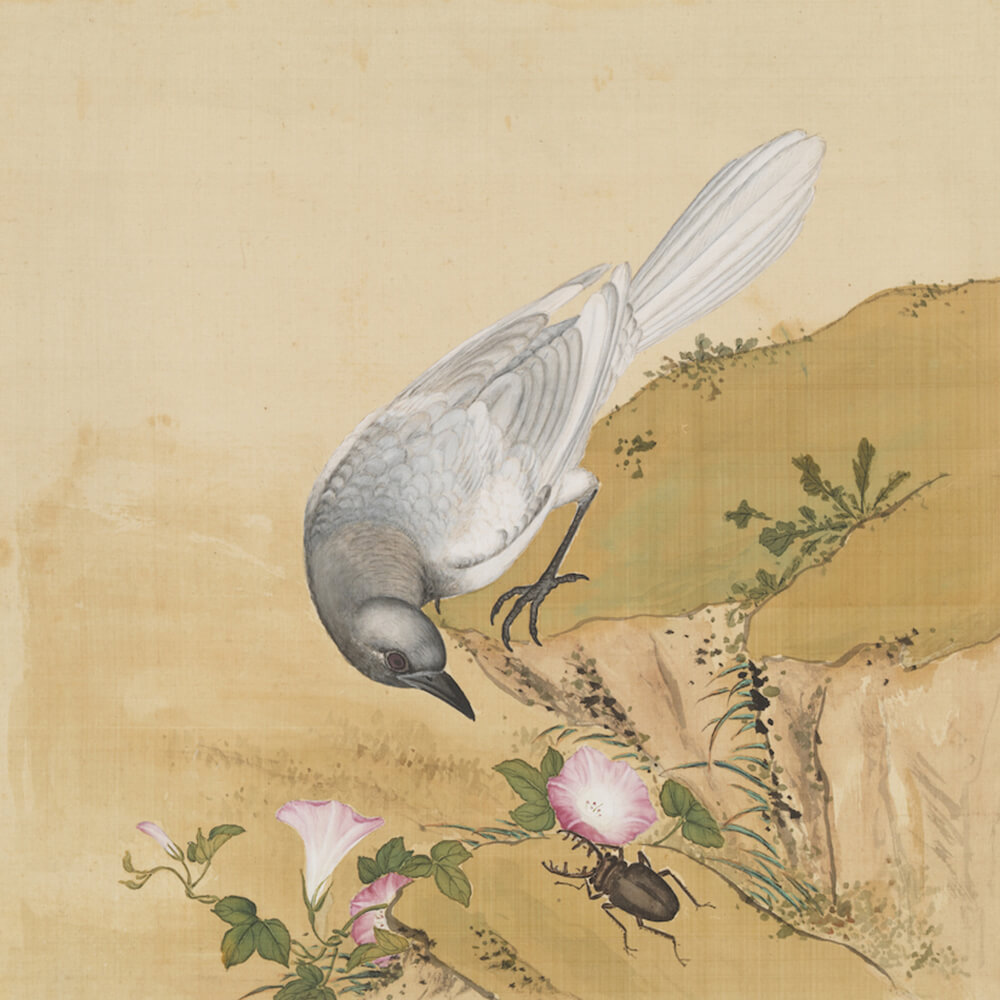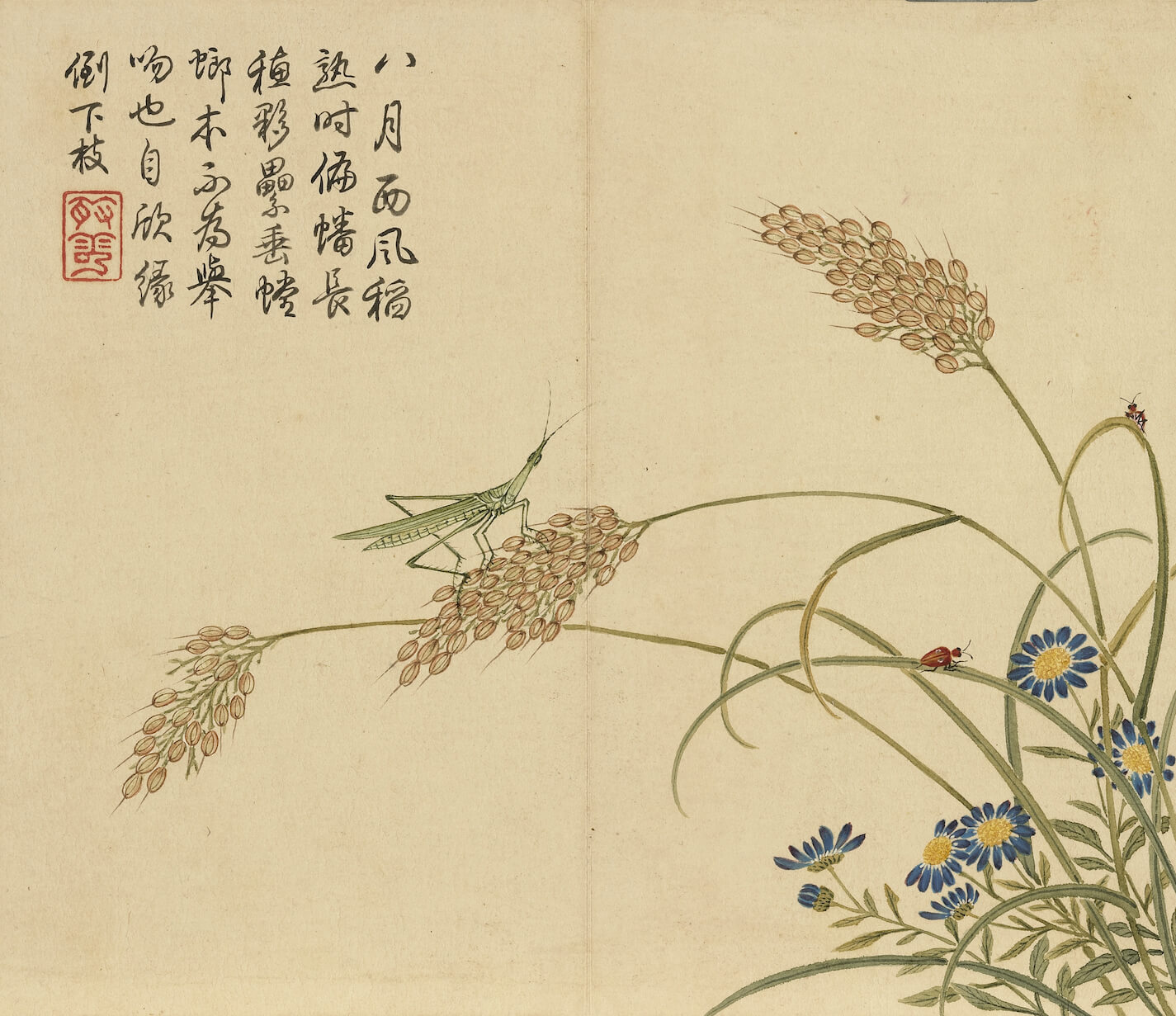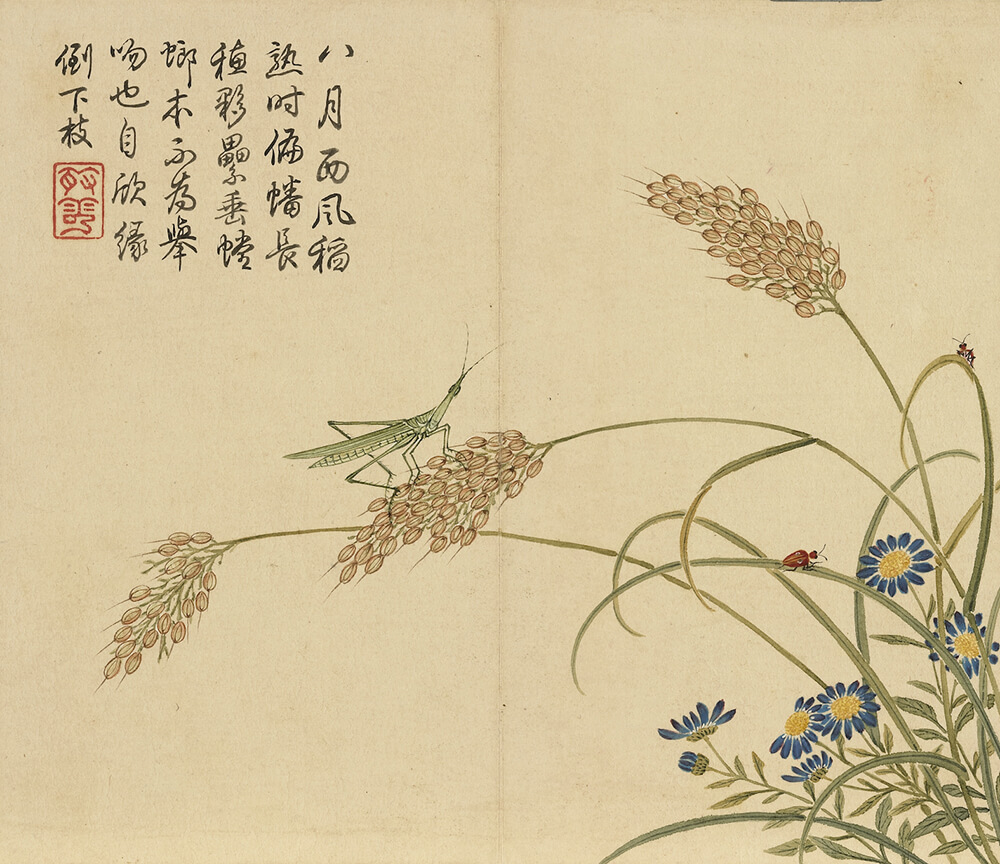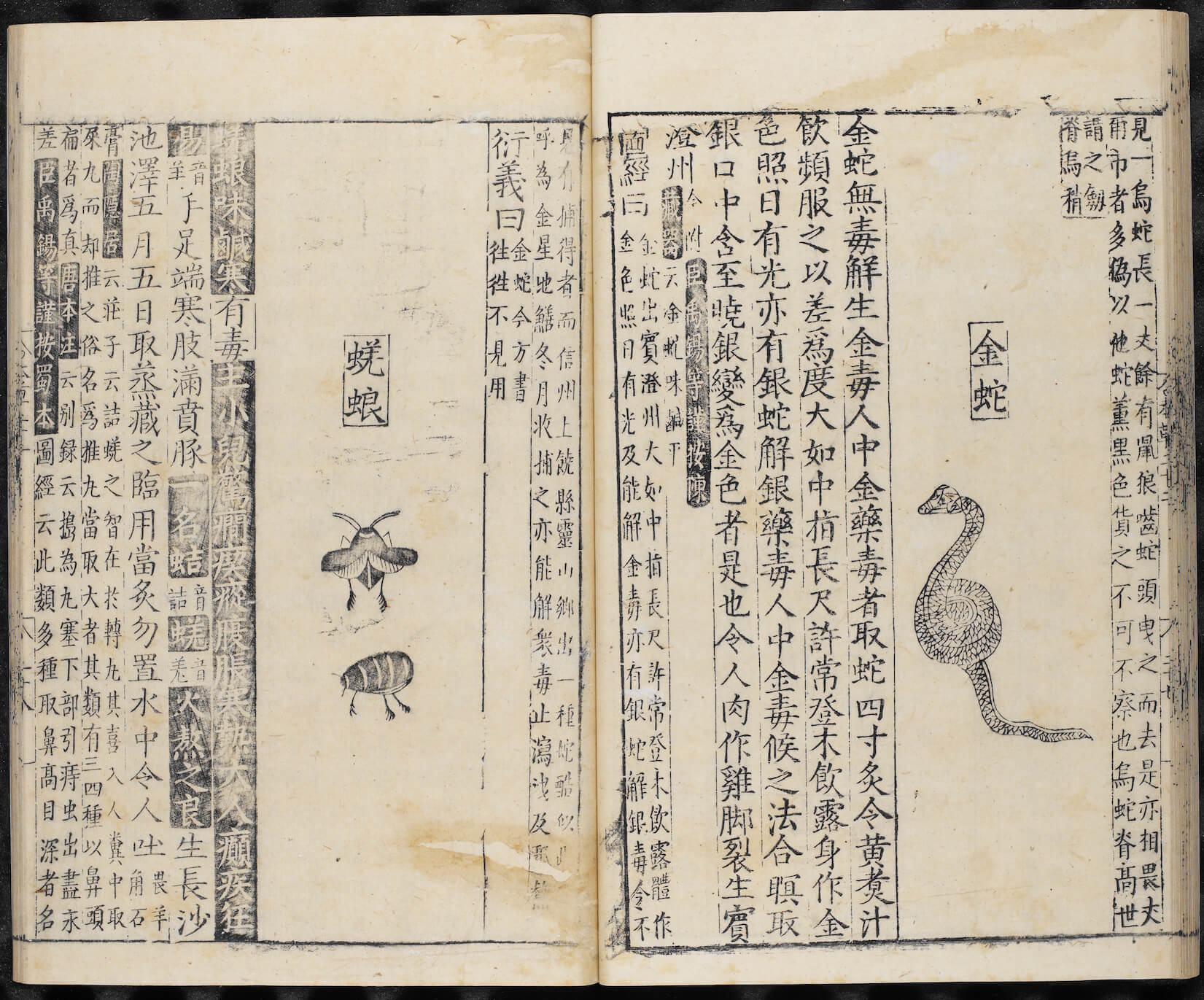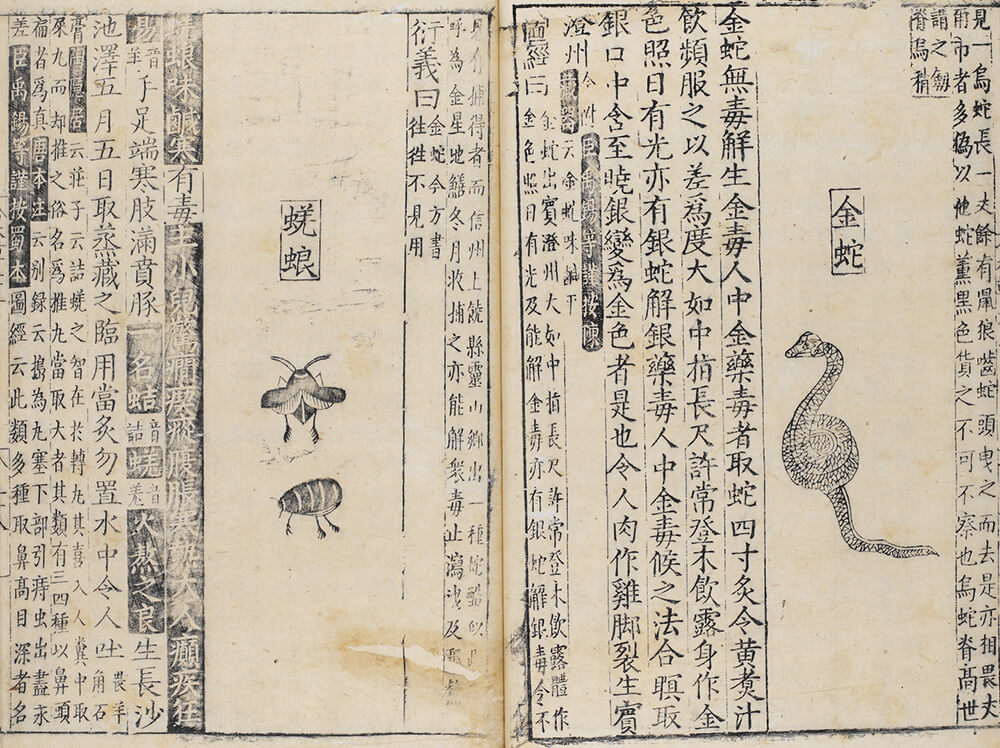The beetles that are not favoured by Caochong paintings
Not all insects and small creatures share the same opportunity to take the lead in the "caochong painting". Under the trend of different eras and cultures, people's preference for insects or animals has changed. For example, stag beetles and rhinoceros beetles recently favoured among children are rare to find in ancient caochong paintings. We attentively selected artworks with these beetles. They are so scarce in number and precious beyond words.
'Qianglang' is the archaic name of dung beetles. This insect is deemed a medicine, and thus frequently appears in herbal documents of Chinese medicine. The absence of photography and advanced printing technique in the past resulted in the rough and unrealistic pictures in block prints. An example is in the exhibit "Collected Classified Materia Medica", the out of form dung beetle. Fortunately, other more refined and precise works exist, such as "Descriptions of Metal, Mineral, Insects and plants", that give a more accurate depiction of the dung beetle.
- White Magpie
- (From "Album of Birds" (I))
Stag beetles were not favoured by traditional Chinese paintings. The stag beetle in this painting is the only one in the NPM's collection. As a supporting role, the stag beetle made its debut in the leaf of 'White Magpie' from the "Album of Birds", painted by Qing court painter in the 18th century. The magpie is twisting the neck, rising the tail, and focusing on the stag beetle next to the morning glory; perhaps it is wondering whether the beetle will make a decent meal.
- Wolfberry Blossoms and Longhorn Beetles
- Jiang Tingxi (1669-1732), Qing dynasty
- From the album "Painting and Calligraphy by Jiang Tingxi and Zhang Zhao"
The illustrated insect is speculated to be the longhorn beetle of some sort. The robust body and visible antennas of the longhorn beetle bring association with an ox. However, instead of having the ability to plough the fields, the longhorn beetles are often considered as pests that cause damage to the woods. The wolfberry is a beneficial herb as its whole plant is edible and has a medical purpose.
The poem on this painting refers to the longhorn beetle as men making slanderous comments, and wolfberry as the affected good; it is a painting embedded with exhortations.
- Insects and Ears of Rice
- Yang Dazhang (fl. 18th c.), Qing dynasty
- From the album "Birds and Flowers"
Yang Dazhang was a court painter in the Qianlong reign (1736-1795) and excelled at figural and bird-and-flower themes.
This painting has visible influences from Western techniques; the image is in the depiction of the generous rice grains attracting a locust and a leaf beetle to rest on top. Nonetheless, Qianlong's Imperial poem in 1768 had mistaken the locust for a mantis, which forced the ministers to 'obey the royal order' and gave this leaf the name 'Ears of Rice and Mantis'.
- Collected Classified Materia Medica
- From the section "Plants 31, Volume 26"
Every so often in the ancient day, the caochong served medical purposes, 'qianglang' was a dung beetle and was considered to cure symptoms such as children's infantile convulsion in herbal documents. The "Collected Classified Materia Medica" has a simplified depiction of qianlang in a noticeable difference from the real dung beetles.

